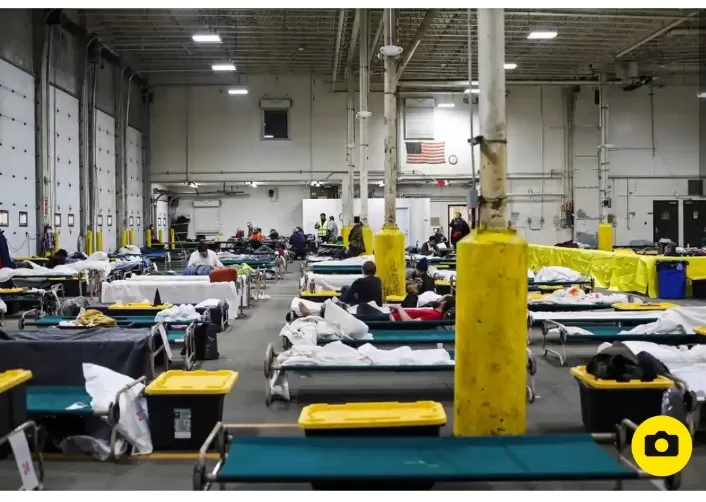In response to consecutive snowstorms burying Anchorage under 3 feet of snow in just nine days, city officials are urgently seeking additional temporary housing solutions for the homeless population. With the thermometer expected to plunge to single digits Fahrenheit, the situation is increasingly critical.
Alaska’s largest city has experienced a surge in homeless deaths this year, with a record 49 individuals living outdoors losing their lives. The Anchorage assembly convened in a special session to address the crisis and approved a contract to add 50 beds to a recently opened shelter.
The existing shelter, established in October, was initially designed for 150 beds and operates from the former administration building of a waste transfer site. This expansion comes after the mass shelter, set up during the pandemic in a sports arena, was closed. Anchorage’s response to homelessness includes a network of shelters in repurposed hotels, apartment buildings, and social services facilities, attempting to accommodate over 3,100 homeless individuals.
With the emergency cold weather shelter already above 90% capacity, the unanimous approval for additional beds aims to meet the escalating demand. Alexis Johnson, the city’s homeless director, emphasized the collaboration with the Anchorage Coalition to End Homelessness to prioritize the new beds for those most in need.
Amid concerns about the shelter’s distance from social service organizations, some assembly members questioned the decision to expand. Johnson defended the move, citing the necessity to maintain a 200-person capacity, particularly during emergency situations like recent heavy snowfall and frigid temperatures.
Four homeless individuals have died in Anchorage this month, and the hazardous conditions escalate as temperatures drop. The extreme weather conditions have impacted various services, from schools switching to remote learning to delays in trash collection.
Alaska is facing one of its snowiest periods, recording the third-highest snowfall over nine days since data collection began in 1916. Despite the significant snowfall, climate scientists warn that it does not necessarily indicate an overall heavier snow year, and Anchorage is experiencing warmer-than-normal days amid the global heating crisis.
As the city grapples with both extreme weather and homelessness challenges, the urgency to address these interconnected issues becomes increasingly apparent.
By AP







